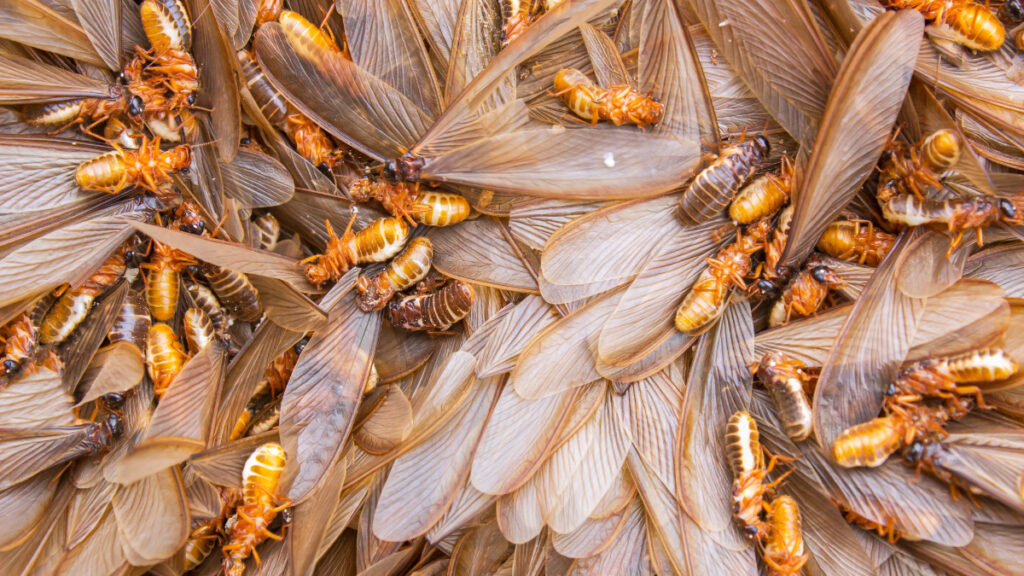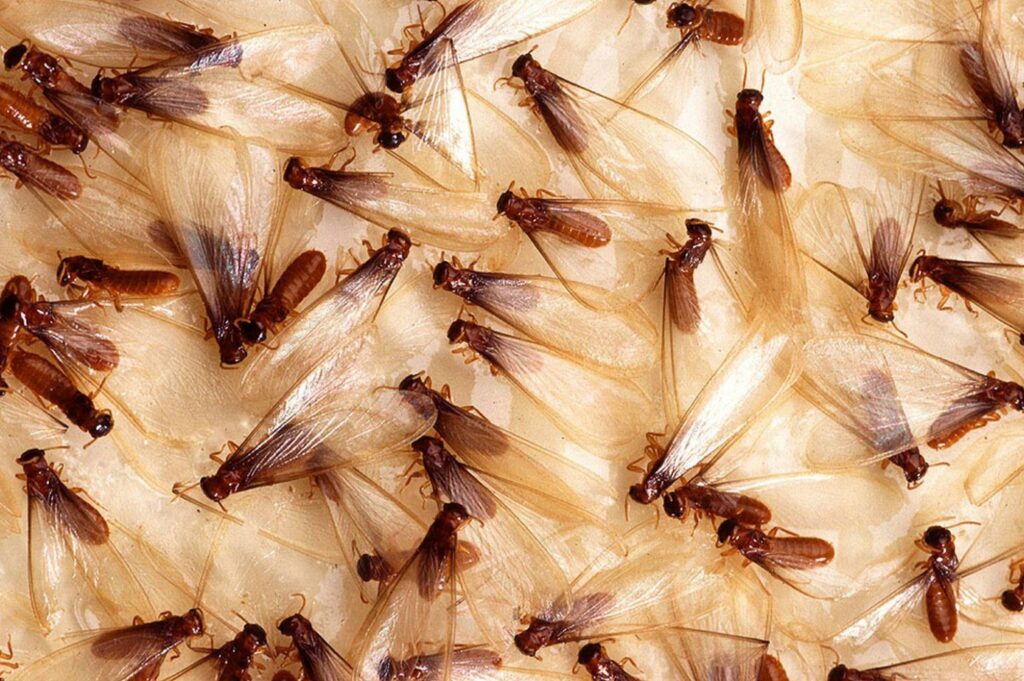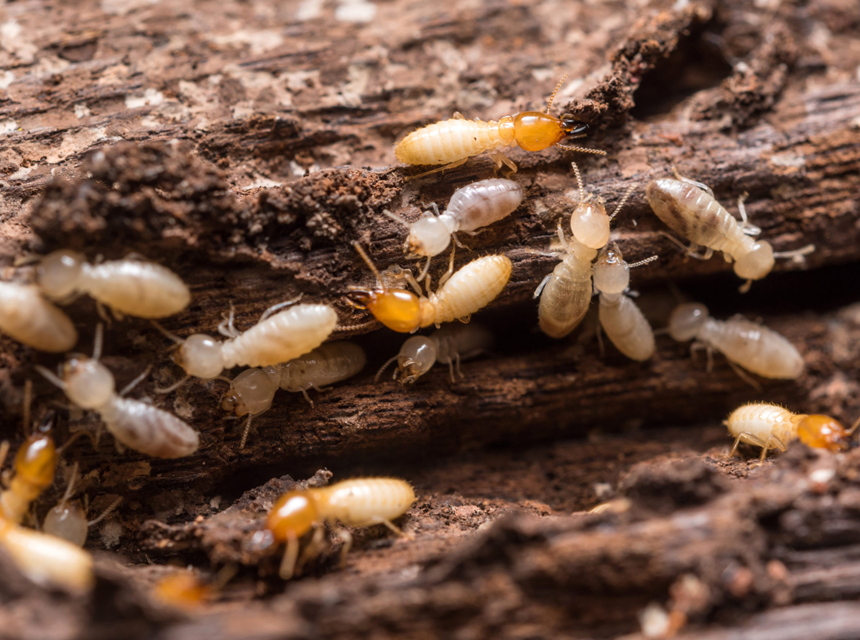

A termite swarm is usually one of the most unexpected natural activities that occur in various parts of the world. This colony raid can last for about 30 to 50 minutes, causing a nuisance to the environment. It is very important that you are aware of the warning signs that signal a termite swarm.
A termite-infested house can be a lot harder to get rid of and also causes damaging effects. Many homeowners are often ill-prepared and struggle to predict termite swarming season. This begs the question – when do termites swarm?
Regardless of what part of the county you live in, this article will help you to know and prepare ahead of time against any termite swarm.
Termites swarm can occur up to 5 times a year. Different termite species swarm at different periods, which can be a headache for any homeowner. Nonetheless, there are warning signs that signal when their presence is around the corner.
While it may be difficult to nail down an exact time termites swarm, there are certain factors that help determine their swarming season. This gives you enough time to prepare for a termite inspection.
Here are some common termite species and their swarming periods.
Generally, termites tend to swarm during cooler periods when temperatures begin to drop. However, this may vary depending on climate conditions in various states. In southern and northern parts of the state, termite swarming season often occurs at slightly different periods due to the varying weather conditions
Florida is a common invasion ground for all kinds of termites. It is filled with the highest number of termite species in the United States. And with Florida being usually termite infested, there are often cases of termite swarms all year round.
Florida experiences large subterranean termite swarms during spring, usually from early March.
Large swarms of different kinds of termites also invade the state through the summer months.
Due to the warm and humid weather conditions in Louisiana, termites often swarm during large parts of the year.
The drywood termites and eastern subterranean termites are common in the state of Louisiana. This swarming activity usually occurs from February through May.
The city of Texas is home to the Formosan subterranean termites and Southeastern Drywood termites with as many as 2 million termites living underground.
These termites typically swarm from February to May. You should expect swarming during morning hours and at night when approaching late spring.
Over 30 counties in the eastern and northern parts of Texas regularly experience termite infestation.
The eastern subterranean termites and dark southeastern subterranean termites are pretty common in Maryland. The swarming habits of these termites sometimes differ.
Termite swarms may occur during the daytime from March to June. You are also likely going to experience swarms during the winter in heated buildings.
California is home to various drywood termites. The desert drywood termite swarms are usually active during the nighttime from June to September. However, this is the opposite for Western drywood termite swarms which normally occur between September and November during the day.
Places in Northern California sometimes experience termite swarms a bit earlier than in Southern California.
Termite swarms in Georgia typically occur during Spring. The state is commonly home to the eastern subterranean termite and Formosan termite.
Due to the warm weather condition in this part of the country swarms normally take place earlier in the year, from February to May. The Formosan termite swarms are very active between late April and May during the nighttime.
Several homes in New Jersey suffer from subterranean termite damage.
The dark southeastern subterranean termite and eastern subterranean termite swarms in this location typically take place during the day between March and June.
Termite swarming is a natural process that is necessary for their expansion and survival. This occurs when a colony has reached its maximum capacity which creates a need to expand and search for new food sources. Most termite species normally expand once a year. The swarmers comprise both male and female termites with the colony growing in size every year, depending on the number bred.
During this period, couples shed their wings, mate and then search for a new location. The colony produces thousands of swarmers known as “alates”, which primarily contribute to the expansion. This termite reproduction process means that they essentially need to find new homes with enough capacity and food sources to accommodate the new arrivals and their colony.
The first few days see a large swarm spreading out to find a suitable location with smaller ones joining in the following days. As the alates become more mature, they will continue the mating process and produce a new colony—leading to further termite swarms.
Termites dwell in the soil for some time until the conditions are perfect to find a new home for their colony. Once the swarmers leave their old abode, they will reach for open air by squeezing through termite holes or small openings.
They are drawn to light so you’re likely going to find them around light bulbs, fluorescent, glass and windows.
Generally, February through May is typically the termite swarming season, after rainfall. However, weather conditions and varying termite species may cause swarming to take place at different periods in the year.
Termite swarms can be an annoying and unpalatable experience for homeowners. These pests normally cause damage to wooden structures and other infrastructures in homes. This situation is often pretty difficult for homeowners to deal with, especially since mature termites swarm in their large colonies.
Termite swarms take place at least once a year and usually last for about 30 to 40 minutes after rainfall. While there’s nothing you can do to stop termite swarms from happening, you can at least be well prepared for this natural process. You need to know how to get rid of flying termites.
Full-winged swarming termites usually reach for a light source after escaping from soils or cracks. You’ll find them flying around light bulbs or windows.
Since termites are attracted to light, you can prevent swarmers in your home by turning off your light bulbs, TVs and any other bright light source until the swarm clears.
If a termite swarm occurs when you’re not home, you’ll find wings lying around your windows, furniture and on the floor. Termites also die of dehydration whenever they cannot find soil to stay in before swarming.
Here are some tips to help you manage a termite swarm.
If you’re finding it difficult to control other pests, you can also purchase the best carpenter ant killers.
Termite swarms are inevitable and occur at least once every year. But when do termites swarm exactly? In some states, swarms occur more often, up to 5 times a year. Knowing the termite swarming season will help you to be better prepared and prevent your home from termite invasion.
However, not everyone can handle a termite swarm, and in most cases, the best course of action would be to contact a termite control company to evaluate the situation and carry out the best termite control method.





